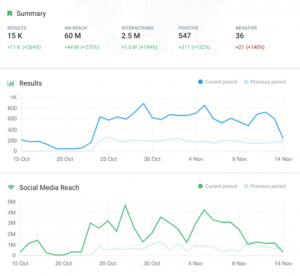Alicia is the Content Manager at Search Engine People, where she enjoys helping clients grow their online presence through creative and engaging content.
The quality of your content is an important factor when it comes to your search rankings. No longer is content simply about the number of keywords, anchor text and links you have on your page. You also need to consider the quality, relevance, context and value of your website’s content. It’s not just about having something on a page – it’s about having content that is relevant, unique, and offers users valuable information, all while adhering to the basic principles of SEO.
Unfortunately for us, there are no simple one-stop shop tools to help you evaluate the quality of the content on your website. But by taking the time to complete a self-evaluation of your content, you can discover which areas you might need to improve. Comparing the quality of your site’s content to that of one of your competitors is a very effective way to determine where your efforts are falling short.
Here are 9 tips for evaluating your website content vs. your competitor’s content:
1. Check For Duplicate Content
Is there any chance that your content was copied from (or heavily inspired by) another site? It is absolutely crucial to have unique content on your website.
Use a tool like PlagSpotter to see if the same text shows up on other sites across the web. You can also use tools like Siteliner to see if you have duplicated content anywhere across your own site’s pages.
If you’ve identified any pages with duplicate content, take action to replace them with new and completely unique text.
2. The CONTENT Of Your Content
What is your content actually about? Is your text valuable, sharable, useful and informational for visitors? Or is it simply there to serve SEO purposes?
You’d be surprised at how easily readers can identify content created for the sake of having content, versus high-quality content that is valuable to them.
If you take time and effort to craft interesting content, Google will reward you.
3. Grammar, Spelling, And Punctuation
Nothing is worse than a blog post, infographic or web page riddled with typos. Whether you like it or not, readers will judge you on your spelling and grammar. Potential customers are evaluating your company based on the quality of your content, so you don’t want to make a bad impression just because you didn’t take the time to proofread your writing.
4. Content Structure
Good content is easy to read.
All of your site’s text should be broken out into readable paragraphs that are identified using:
- headings,
- subheadings,
- bullet lists,
- and other features that help readers skim your content.
Use images and videos where possible to break up a long page of text.
5. Freshness Of Content
Are you updating your content regularly? Do you have a blog that is frequently posted on?
Publishing fresh content on a regular basis sends a signal to search engines to crawl your site again and again. Your brand new content will be indexed and will hopefully build your site’s authority in the process.
6. Media Rich Content
Take a realistic look at the number of images and other types of media you’ve incorporated into your text content across your website.
Photos, videos, graphs and diagrams make content more interesting not only to your readers, but also to Google.
Consider enhancing any pages that are text-heavy, or those that feature information that could be better explained visually.
7. Quantity Vs. Quality
When it comes to content, quality beats out quantity every time .
quality beats
out
quantity every timeYou may be tempted to pump out dozens of new pages that target new keywords to rank for. However, it’s better to spend more time crafting a few high-quality pages of content rather than a bunch of mediocre ones.
Also consider the impact that adding tons of new pages to your site will have on users – more content means more confusion and more difficulty finding the content they actually want to read.
8. Length Of Blog Posts
Take a look at the length of your blog posts in comparison to those of your competitor. Are they much shorter? Do you even have a blog?
While having shorter blog posts than your competitor does not necessarily mean they are of a lower quality, it has been shown that pages with a higher word count rank better, and increase shareability.
If you find that your blog posts are falling a little short, try upping the word count to around 1500 words per post.
9. Check Shareability & Performance
Use a tool such as quicksprout.com to discover how your site’s content is being shared on social media in comparison to your competitor’s.
Take note of what types of content have been most successful for both you and your competitor, and plan to create more content pieces around these popular topics or formats.
9 Tips For Evaluating The Quality Of Your Site’s Content vs. A Competitor
The post 9 Tips For Evaluating The Quality Of Your Site’s Content vs. A Competitor appeared first on Search Engine People Blog.
(302)
Report Post







